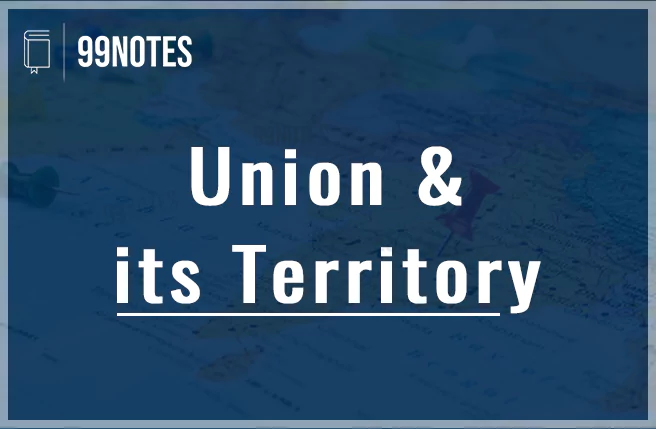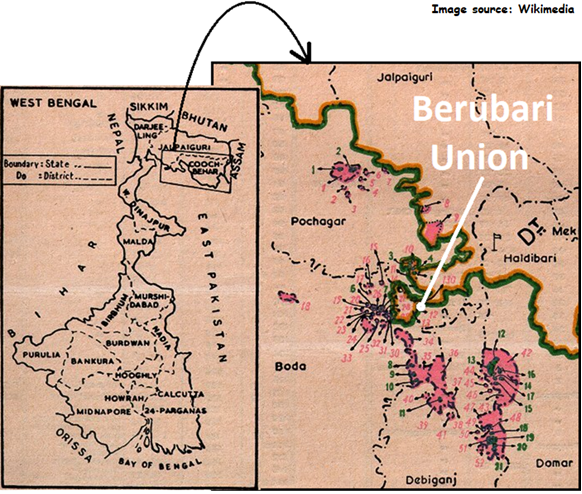Union and its Territory UPSC
Considering the vast diversity of this subcontinent, the framers of the Indian constitution created a federal Union structurally based on the Government of India Act 1935. It was a highly centralised structure; however, regional political forces have always worked towards reducing the centre’s grip over the states.
Articles 1 to 4 of the Constitution addresses the Union and its territories. Presently, there exist 28 states and 8 union territories.
India – A Union of States
- Article 1 of the constitution describes India, that is, Bharat, as a Union of states.
- In the absence of unanimity in the constituent assembly regarding the name of the country, it was decided to adopt both the traditional name Bharat, as well as the Modern name India.
- Despite adopting a federal scheme in the constitution, the phrase ‘Union of India’ has been used instead of ‘federation of states’. Dr BR Ambedkar clarified this by giving reasons:
- Indian Federation is not the consequence of an agreement of states as in the case of the American Federation.
- The states have no right to secede from the federation. It’s a union because it is indestructible.
- Classification of territories: Article 1 classifies the territory of India into three categories:
- Territories of the states.
- Union territories.
- Territories that the Government of India may acquire at any time.
- The names of states and the Union territories and their territorial extent can be in the 1st schedule of the constitution.
- The ‘Territory of India’ and the ‘Union of States’: The ‘Territory of India’ is a wider expression than the ‘Union of India’ since the latter only includes the states while the former includes not only the states and the Union territories but also the territories which the Government of India may acquire at any given time.
- Acquisition of Foreign territory: Foreign territories can be acquired through the means recognised by International laws, i.e. Cessation (following treaty, purchase, gift, lease or plebiscite), Occupation (territory unoccupied by a recognised ruler, conquest or subjugation). For example, the acquisition of Dadra and Nagar Haveli, Goa, Daman and Diu and Sikkim by India).
- Article 2 empowers the Parliament to admit and establish new states into the Union of India. Establishing a new state refers to states which are not in existence before.
- Article 3 deals with internal adjustments of the states of the Union of India.
Parliament’s authority regarding the reorganisation of the states
The Parliament enjoys unrestricted powers in the matters of reorganisation of the states and the Union territories. It can change the political map of India at its will. It has been rightly described as an “indestructible union of destructible states”.
- Article 3 authorises the Parliament to:
- However, the article provides for two conditions:
- Article 4 states that the laws made under Article 2 (admission and establishment of new states and Article 3 (formation of new states, alteration of boundaries, areas and names of states) are not considered constitutional amendments under Article 368. Thus it needs only a simple majority (like ordinary legislation) to enact the legislation.
Organisation of States Post-Independence India
Independent India inherited a loose political-administrative structure from the British. The initial task of the Constituent Assembly and the interim government was to organise this structure with a rational framework. The foremost task was the integration of the princely states.
- At the time of independence, there were two kinds of political units; the British Provinces (directly administered by the British government) and the Princely states (ruled by Princes but under the paramountcy of the British crown).
- At the time of the independence, there were 550-odd princely states existed. In the Indian Independence Act (1947), these states were given the option of either joining the Dominion of India and Pakistan or remaining independent (However, as per the Mountbatten Plan, their independence was ruled out).
- All of the princely states situated within the geographical boundaries of India signed the instrument of accession and joined India, except for the princely states of Hyderabad, Junagarh and Jammu and Kashmir. Ultimately, these states were also integrated with India; Hyderabad through police action, Junagarh by means of a referendum, and Jammu and Kashmir signed the instrument of accession after facing invasion from Pakistani tribal militia.

Related FAQs of Union and its Territory
Article 1 describes India as a “Union of States” and classifies the territory of India into three categories — States, Union Territories, and territories that India may acquire in the future.
Dr B.R. Ambedkar clarified that India is called a Union because the Indian Federation is not the result of an agreement among states, and no state has the right to secede from the Union.
The ‘Union of India’ includes only states, while the ‘Territory of India’ includes states, union territories, and any territories acquired by India in the future.
Article 3 empowers Parliament to form new states, alter areas, change boundaries, and rename existing states. However, it requires the President to seek the opinion of the concerned state’s legislature before making changes.
No, changes under Articles 2 and 3 (like forming new states, altering boundaries, or changing names) are not considered Constitutional Amendments. Such changes need only a simple majority in Parliament under Article 4.







